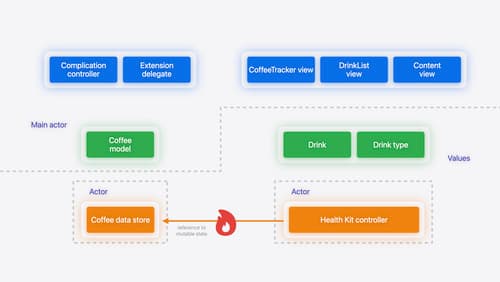How do you prioritise a WebKit bug?
Asked on 2024-07-31
1 search
To prioritize a WebKit bug, you should focus on issues that have the greatest impact on your users. Here are some steps and considerations based on the context provided:
-
Identify High-Impact Issues: Use tools like the thread performance checker in Xcode to surface runtime issues that significantly affect user experience. For example, if the checker flags an issue with loading a video asset on the main thread, this should be prioritized as it impacts performance (What’s new in Xcode 16).
-
Triage Test Failures: Document known errors in your tests using functions like
with known issueto manage test failures that you cannot immediately fix. This helps in reducing noise and focusing on real customer-facing problems (Go further with Swift Testing). -
Use Feedback and Data: Utilize feedback from beta testers and data collected from the launches organizer to identify and prioritize bugs. Issues that cause significant delays in app launch or spikes in terminations should be addressed first (Xcode essentials).
-
Iterative Fixes: Start with the simplest fixes that can resolve a large number of issues. Sometimes a single line change can have a significant impact (Migrate your app to Swift 6).
-
Debugging Techniques: Use breakpoints effectively to trace and fix issues. For example, setting breakpoints in specific functions and handlers can help isolate and address problematic code (Xcode essentials).
By following these steps, you can effectively prioritize and address WebKit bugs to improve the overall performance and user experience of your application.

Migrate your app to Swift 6
Experience Swift 6 migration in action as we update an existing sample app. Learn how to migrate incrementally, module by module, and how the compiler helps you identify code that’s at risk of data races. Discover different techniques for ensuring clear isolation boundaries and eliminating concurrent access to shared mutable state.

Support semantic search with Core Spotlight
Learn how to provide semantic search results in your app using Core Spotlight. Understand how to make your app’s content available in the user’s private, on-device index so people can search for items using natural language. We’ll also share how to optimize your app’s performance by scheduling indexing activities. To get the most out of this session, we recommend first checking out Core Spotlight documentation on the Apple Developer website.

Xcode essentials
Edit, debug, commit, repeat. Explore the suite of tools in Xcode that help you iterate quickly when developing apps. Discover tips and tricks to help optimize and boost your development workflow.
